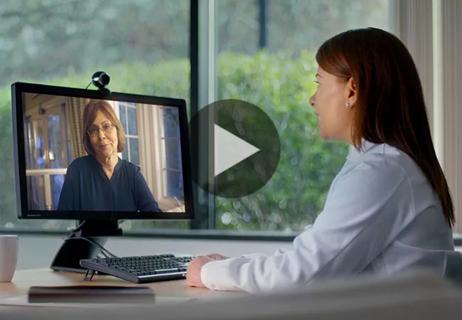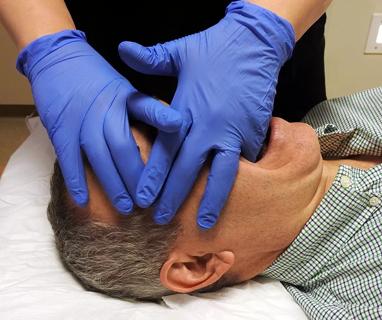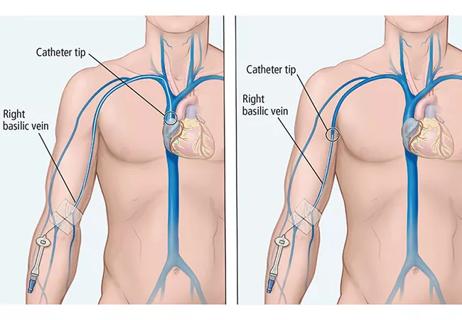Advertisement
Issues of interstate licensure and reimbursement abound

By Jamal H. Mahar, MD, James Gregory Rosencrance, MD, and Peter A. Rasmussen, MD
Advertisement
Cleveland Clinic is a non-profit academic medical center. Advertising on our site helps support our mission. We do not endorse non-Cleveland Clinic products or services. Policy
Telemedicine has been used successfully to improve patient access to medical care while reducing healthcare costs. In 2016, an estimated 61 percent of U.S. healthcare institutions and 40 to 50 percent of U.S. hospitals used telemedicine. From 2012 to 2013, the telemedicine market grew by 60 percent. However, its widespread use has been limited by low reimbursement rates and interstate licensing and practice issues.
In this commentary, we discuss telemedicine’s current uses and challenges, and areas of future growth.
Telemedicine allows patients living in both rural and urban areas to access healthcare when they need it. Currently, about 59 million Americans reside in health professional-shortage areas, which are rural and urban areas with shortages of primary care providers. These patients often experience long delays when attempting to schedule a healthcare visit and may experience issues with continuity of care if they are unable to see the same care provider at every visit.
It also provides access to care to patients without reliable transportation or those who may be too sick to travel long distances. For some patients, such as those with cystic fibrosis who do not want to come to the hospital for fear of contracting multiple antibiotic-resistant bacteria, a virtual office visit may be safer.
At the same time, telemedicine helps reduce healthcare costs. For example, it:
The last point is especially important for senior living and skilled nursing centers whose residents are known to have high rates of hospital admissions. In these facilities, 24-hour medical assistance may not be available, and telemedicine can help troubleshoot common problems.
Limited reimbursement has curtailed the widespread use of telemedicine. Although rules for reimbursement are evolving, telemedicine still represents a small amount of total healthcare expenditures. In 2015, Medicare spent approximately $14.4 million on services delivered via telemedicine — less than 0.01 percent of total spending on healthcare services.
Advertisement
Currently, 31 states and the District of Columbia have telemedicine parity laws that mandate private commercial insurers to pay for telemedicine services. Unfortunately, there is a lack of uniformity in the specifics of these laws, resulting in variations in reimbursement rates. Furthermore, a large number of larger insurers such as Medicare and Medicaid and many self-insured plans do not fall under these mandates.
Another factor that affects reimbursement for telemedicine services is the setting of the medical encounter. Medicare reimburses providers for telemedicine services only when they are conducted at specific sites such as physician’s offices, hospitals, rural health centers and skilled nursing facilities. Additionally, Medicare only reimburses for services in areas with a shortage of healthcare professionals and in non-metropolitan areas, which excludes many urban patients.
In contrast, more commercial reimbursement is occurring for online urgent care, and options for commercial reimbursement of online behavioral services are being explored.
Current licensure laws also limit the ability of many healthcare providers to offer telemedicine services. Federal law requires providers to be fully licensed to practice medicine in the state where the patient is physically located. In cases of health systems that have locations in more than one state, providers may need to apply for and pay to maintain multiple licenses (current interstate licensing laws vary across states).
Interstate licensure is one way to solve this problem. Thus far, a number of states have joined the Interstate Medical Licensure Compact that intends to allow physicians to obtain expedited licenses to practice in multiple states.
Our health system has several telemedicine programs, including our eHospital program. Launched in 2014, this program provides patients at four hospitals with input from staff intensivists and experienced critical care nurses during the night (7 p.m. to 7 a.m.) via remote monitoring. These remote caregivers have full access to patient charts and, when signaled, can activate an in-room camera to initiate two-way audio communication with patients, their families and bedside caregivers.
Advertisement
In addition, new patient consults are being offered via telemedicine for several services including dermatology, where pictures of skin lesions are reviewed and triaged, and management recommendations are provided accordingly.
In 2016, Cleveland Clinic launched its Remote Hypertension Improvement Program — an enterprise-wide initiative to minimize hypertension-associated mortality and morbidity with the assistance of telehealth services. The program was first piloted in a group of 80 high-risk hypertensive patients who were monitored and followed through a Bluetooth-enabled remote monitoring tool, which exported blood pressure readings to a central dashboard. A multidisciplinary team of doctors, nurses and pharmacists used this dashboard to adjust medication when needed and provide virtual lifestyle coaching. Over a 24-week period, the patients’ systolic blood pressure decreased by an average of 7.5 mm Hg and diastolic blood pressure by 3.1 mm Hg (unpublished data).
Beginning this year, blood pressure readings will be directly exported from the remote monitoring tool into the patient’s electronic medical record, providing the healthcare team with the information needed to make informed decisions to remotely manage patients with hypertension.
Recent data suggest that virtual chronic disease management represents an untapped market for telemedicine, given its relative underutilization compared to other services such as telebehavorial health and specialty telemedicine. These patients require frequent visits to the doctor, and targeting this patient population with telemedicine may decrease the number of emergency room visits and hospital admissions.
Another growing area in the field of telemedicine is the “hospital at home” model in which patients who meet the criteria for hospitalization but are otherwise stable are treated at home for diseases such as chronic obstructive pulmonary disease, pneumonia and heart failure. Studies have shown that the hospital-at-home model, when used appropriately, is not only more cost-effective than hospitalization but results in a shorter treatment duration and lower rates of delirium.
Finally, in the acute setting, we have seen wide success with telemedicine programs in stroke care, radiology, intensive care and psychiatry, and several studies have shown mortality rates comparable to those with the traditional model. These encounters often require specialized skills and are the focus of multiple ongoing studies.
Acknowledgment: The authors would like to acknowledge and thank Matthew Faiman, MD, for providing information regarding the Remote Hypertension Program.
This abridged article was originally published in the Cleveland Clinic Journal of Medicine.
Dr. Mahar is clinical associate staff in the Medicine Institute. Dr. Rosencrance is Chair of the Medicine Institute. Dr. Rasmussen is Medical Director of Distance Health.
Advertisement
Advertisement

Benefits reach beyond patients

An updated review of risk factors, management and treatment considerations

OMT may be right for some with Graves’ eye disease

Perserverance may depend on several specifics, including medication type, insurance coverage and medium-term weight loss

Integrate climate-related health information and counseling into your practice

Physicians discuss a specific case example, and PICC pros, cons and alternatives

A snapshot of the 2020 GINA report